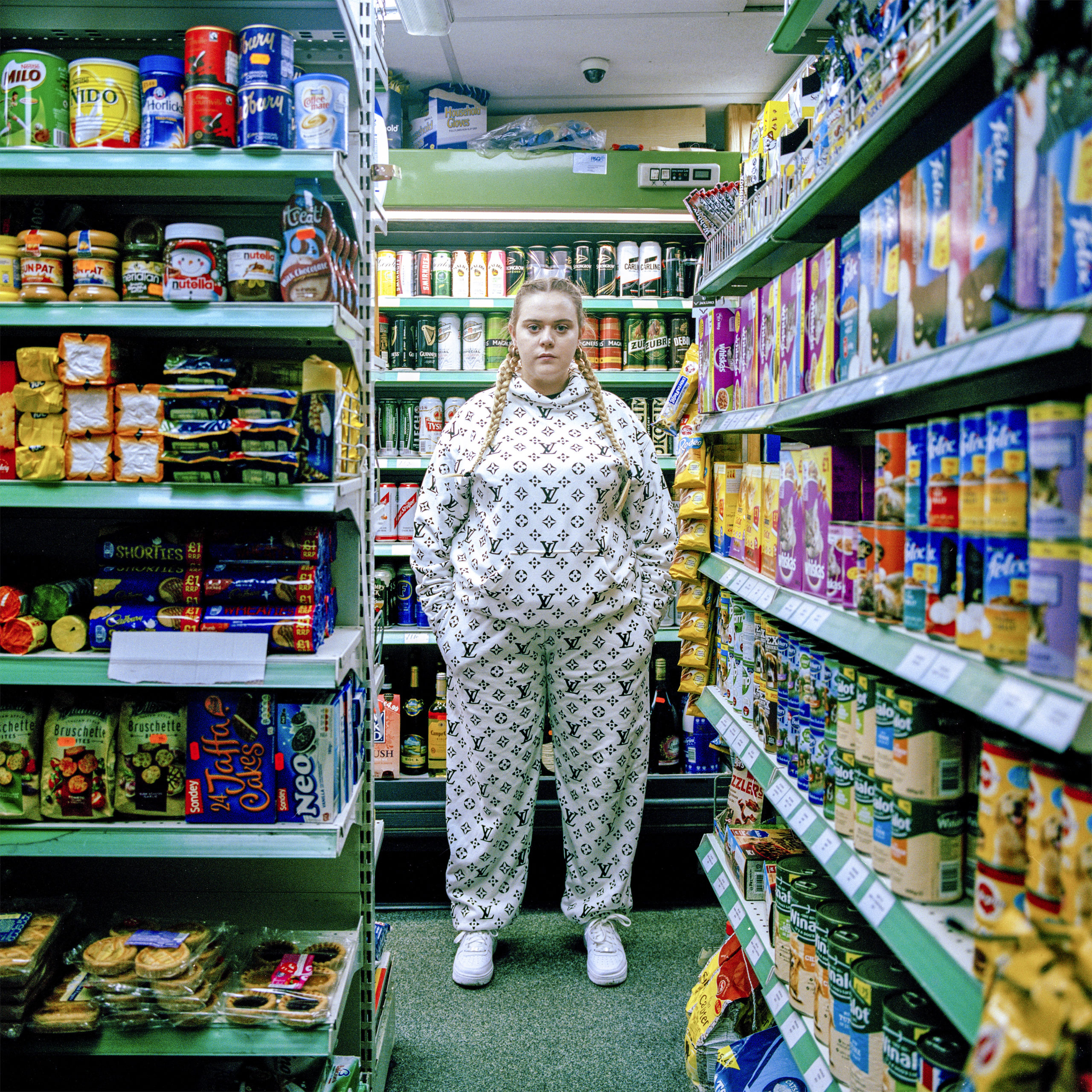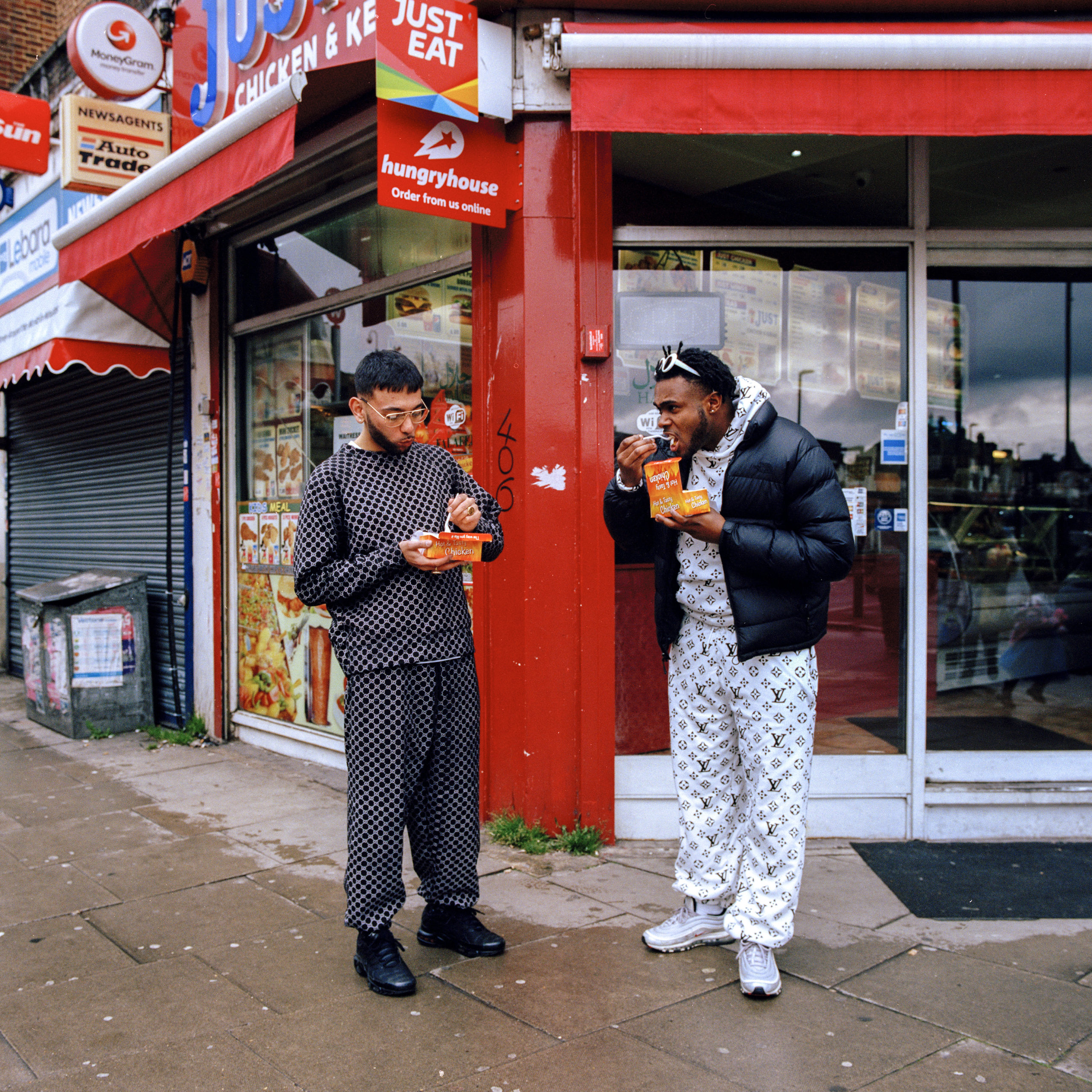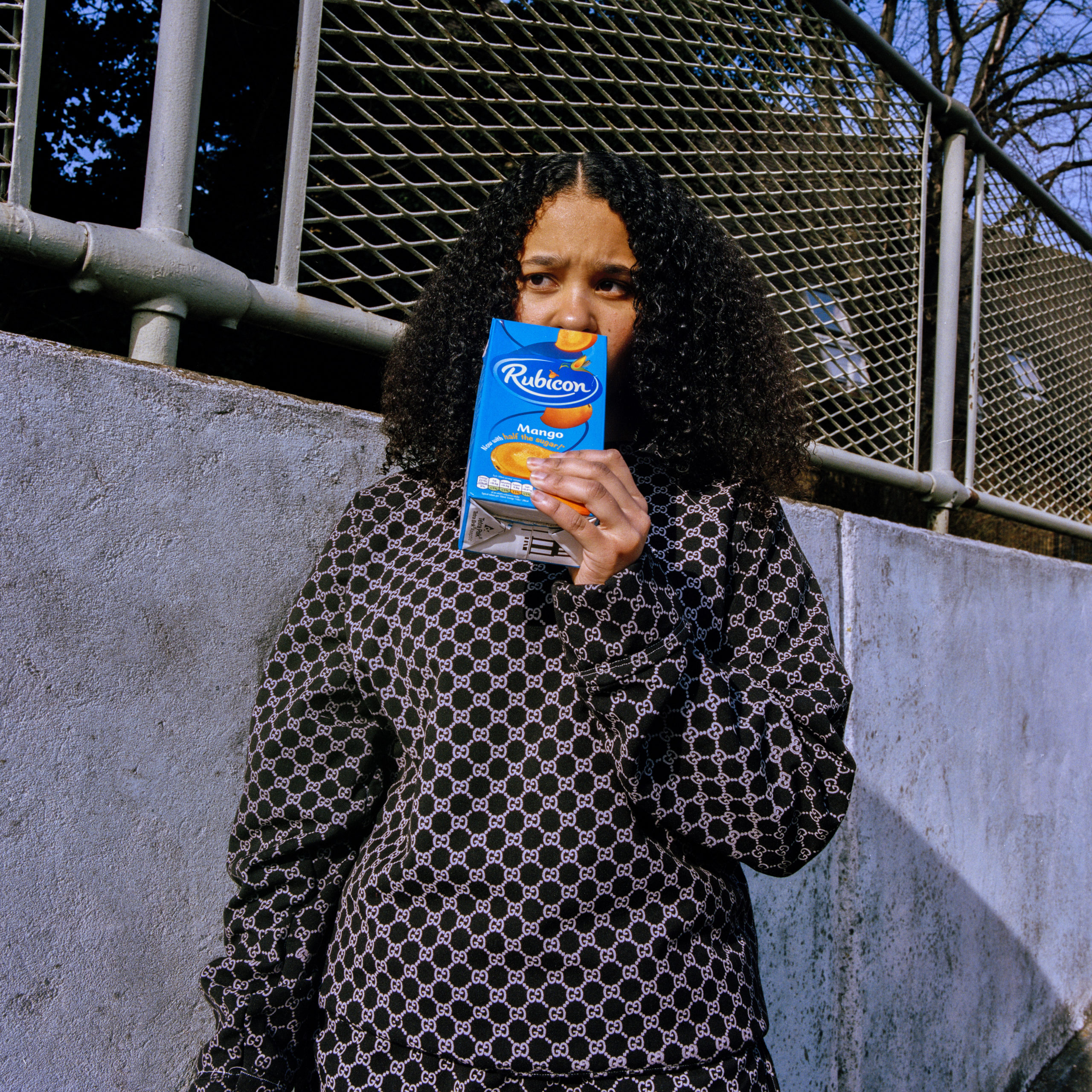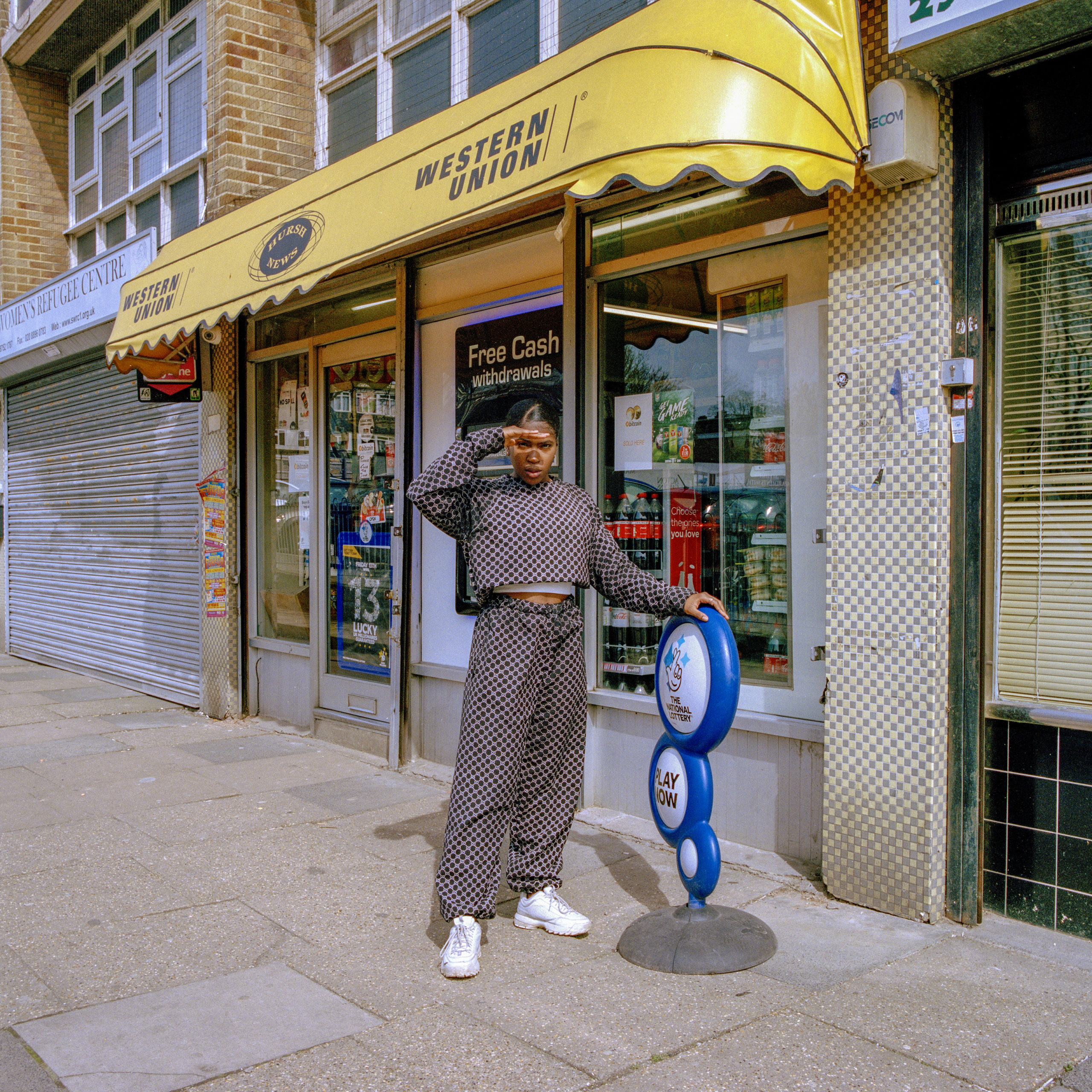To coincide with Portrait of Britain 2021, Serena Brown discusses Back a Yard: a project addressing the meteoric rise of the tracksuit in British culture — and how marginalised people come to be priced out of trends they started
Culminating in the nation’s biggest annual photography exhibition, Portrait of Britain is an award capturing the many faces of modern Britain. Enter now.
Growing up as a second generation immigrant in West London throughout the 2000s, neither Serena Brown, nor her friends, had large sums of money to spend on clothes. But fashion was a crucial part of their identity. The 23-year-old photographer harbours a palpable nostalgia for the trends led by (largely Black and Asian) working class kids of her generation: Nike’s ‘Just Do It’ bags, Air Force 1 trainers, and counterfeit Gucci belts. But in particular, tracksuits.
“[Tracksuits] were traditionally low-brow items,” she says, “often seen as threatening or ‘chavvy’ when we wore them.” But as she got older, she was perplexed by their rise to high fashion. “Suddenly, designer brands were charging thousands of pounds for a tracksuit, and I was seeing low income people being priced out of the trends they had defined.” In a bid to confront the brands who are “literally gentrifying fashion,” Brown’s portraiture series Back a Yard (a Jamaican term referring to the way things are done “back home”) captures friends from her childhood sporting bootleg “high fashion” tracksuits in their local neighbourhoods.

The series was inspired by the Harlem-born tailor, Dapper Dan, who built a career in the 80s and 90s reworking high fashion clothes to make them more accessible to his community. His initial clientele were “hustlers” and local drug dealers; over time, he graduated to the likes of LL Cool J, Mike Tyson, and Jam Master Jay. Made out of textiles bought from Shepherd’s Bush Market, each of the outfits in Brown’s shoot cost about £20 to make. But donned by her subjects, they are effortlessly stylish: a simple reclamation of an aesthetic that was vilified for before it was “cool”.
“When I was at school,” Brown remembers, “I was constantly seeing boys get stopped and searched, and it was often because of what they were wearing. A lot of the time it was to do with race, don’t get me wrong – but I also think class plays a massive role in it.” Unsurprisingly, when worn by the (white) middle class, such negative connotations attached to tracksuits evaporate.
While tracksuits have a rich international history, their popularity outside of sports has, through the decades, been rooted in subculture. When grime music first unfolded from the council estates of East London at the turn of the millennium – stemming from a need for Britain’s young, working class Black community to make their voices heard – the tracksuit was the movement’s unofficial uniform. As music by the likes of Skepta, JME and Wiley swept the nation, so did the clothes they wore; part of a broader issue whereby, to this day, working class culture is co-opted, fetishised, and ultimately gentrified — meanwhile, the everyday people who created it are left behind.

“Suddenly, designer brands were charging thousands of pounds for a tracksuit, and I was seeing low income people being priced out of the trends they had defined”
The phenomenon is inextricably linked to visual culture, whether it’s white models styled using Black aesthetics, or brands emulating the setting of a council estate to seem “gritty”. “I always believe that the most honest way to document culture is to be representing one that you’re a part of,” muses Brown. “For me, in visual arts, that should be the standard. But instead, [marginalised] people have always been trapped within this really voyeuristic world.”
Brown accepts that mainstream adoption of subcultural trends has always happened. Consider the popularisation of goth culture in the 1990s, coinciding with (amongst other factors) the breakout of Marilyn Manson and Nine Inch Nails; or the mass eruption of skate culture in the 2010s – Thrasher hoodies, Huf ‘Plantlife’ socks, Old Skool Vans – aided in part by the rise of rapper (and skateboard enthusiast) Tyler the Creator. In the case of tracksuits, and streetwear more widely, the photographer doesn’t think it’s a “bad” thing. But she hopes Back a Yard could encourage middle class audiences to be critical about the trends they engage with.
“It’s more about acknowledging your privilege,” Brown says. “[Acknowledging] that you’re able to wear a tracksuit without being inconvenienced or looked down on in the street, while others aren’t.”


